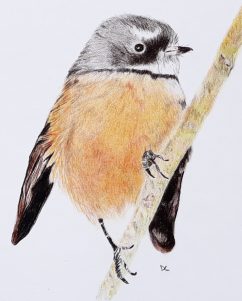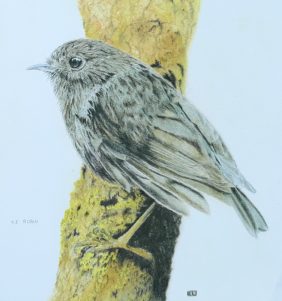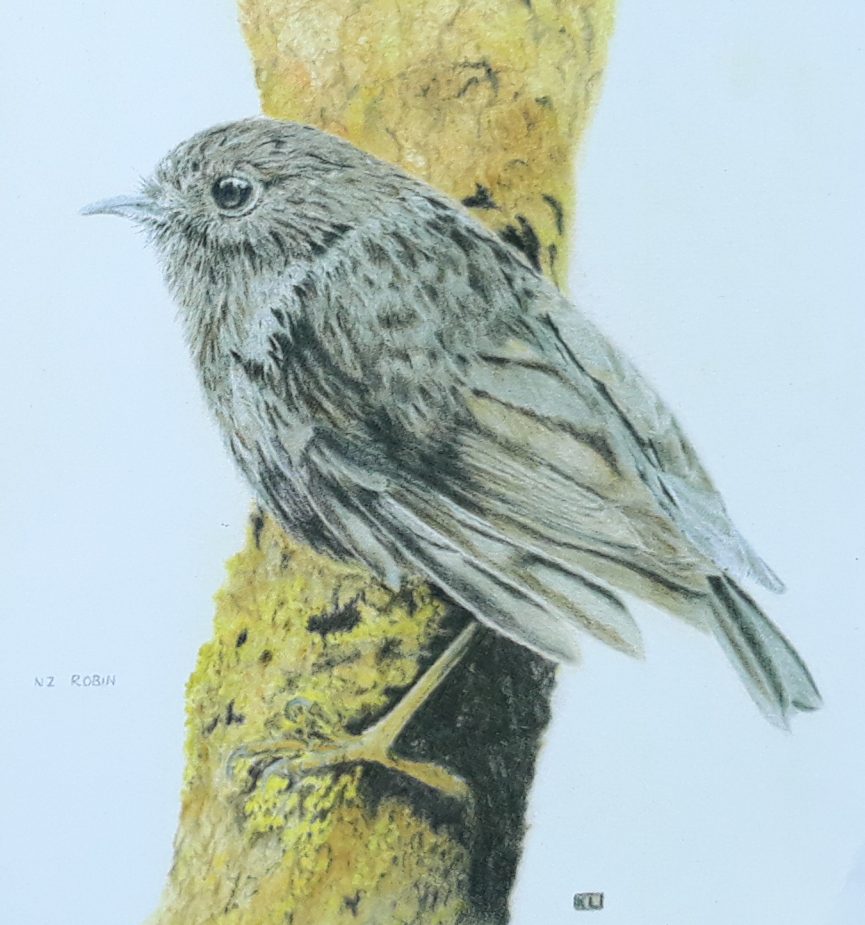I have regular holidays, as my private classes go with the school terms. They do feel like holidays in the sense that I can laze around in my dressing gown but they also give me time to put into painting and writing courses etc.
I recall a holiday period when I was working on a big portrait commission and woke up early thinking about it. Still half asleep I put on my dressing gown and began to work on the portrait at my easel, where I had left it to dry the day before. I applied a few brush strokes, became fully absorbed for several minutes and wiped the brush on the dressing gown! Those of you who have learned watercolour technique from me will know how I encourage you to ‘honour the process’ and be mindful of your set up, which includes having an old towel for wiping the paint off your brush…
I am working on a series of bird courses using sighting for accuracy. Sighting is another word for construction drawing, where we use horizontal and vertical lines to enable proportion.
Sighting helps us to override the powerful symbols of the left hemisphere, which are necessary for recognising and evaluating life experiences but alter our capacity to perceive what is really there. I notice when I first sit down to draw, if I don’t consciously activate my right hemisphere I won’t see all the contours as they really are until I’ve been drawing for several minutes. Sighting supports us to see what is really there which is useful if we want to draw realistically.
This entrancing little fantail is the subject of my first bird course. There’s a flowering cherry just out my studio window and occasionally one or two fantails alight on the branches, eye me with their soft, dark eyes and arch their little white eyebrows as if saying, ‘well go on, draw me if you dare.’

Fantails have a series of contours (an art word for the outlines around objects) in a specific relationship. You can see that if I draw a horizontal line across the body, I can see where the top of the left wing begins in relation to the right side of the body where it rests behind the branch. I can draw a vertical line from the tip of the beak down the page and discover where the right wing begins in relation to it. I say to my-self, ‘the top of the wing is just a little bit to the left of the beak.’’

‘Just a little bit’ is good enough. I don’t have to do an exact replica of the photo (it’s my drawing!) but I do want to draw a credible fantail. When my beginner face to face students draw this little darling of the NZ bush they all have a different version – each one unique and in my eyes equally credible.

Our beautiful native Robin, drawn by a student at a more advanced level than the fantail, is the subject of the final bird course, where sighting is used among other techniques, to achieve accuracy and manage all those feathers!

Everyone can learn to draw in proportion, just like these students (who had never drawn in their lives) by using sighting to help you see what is really there.

